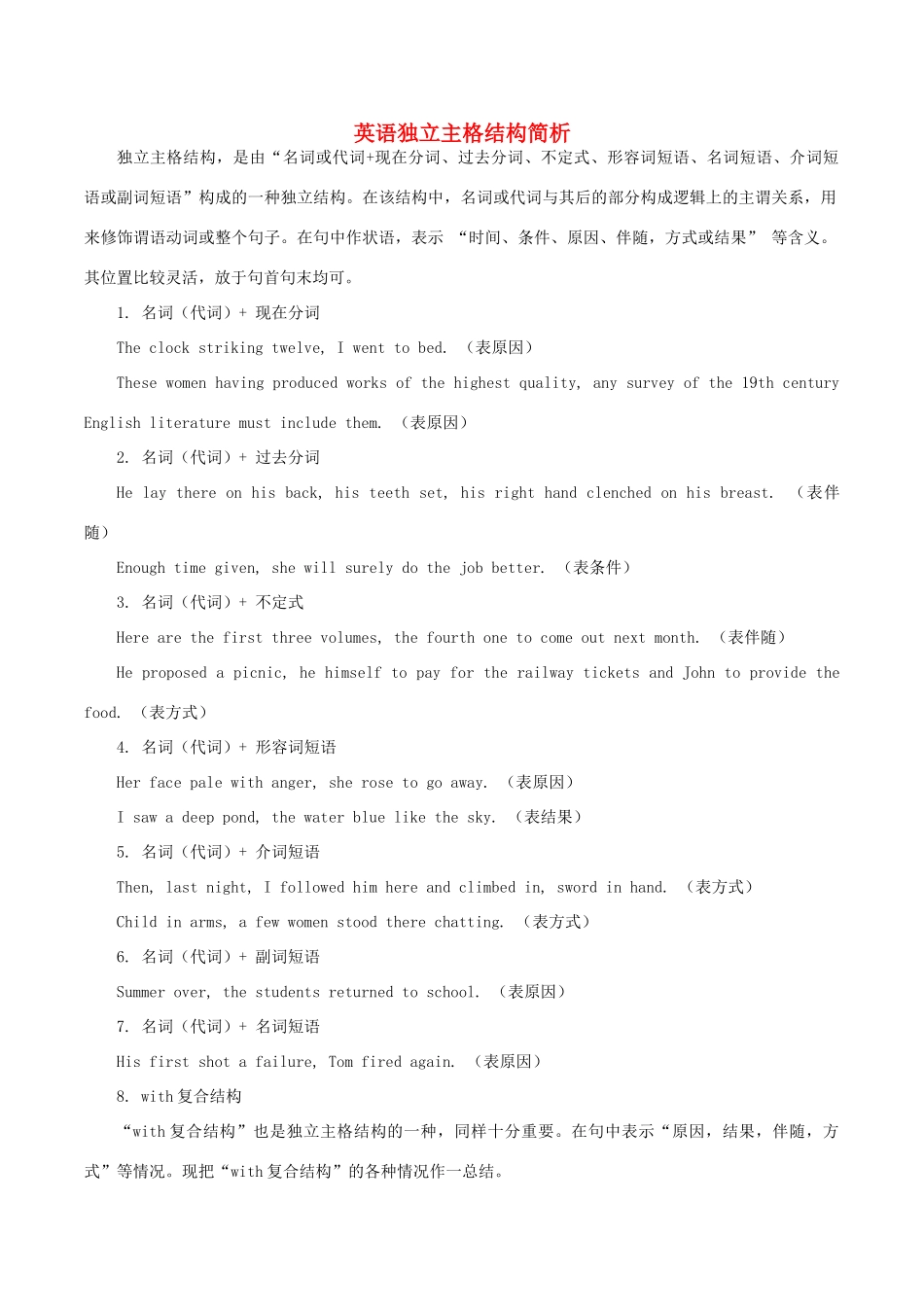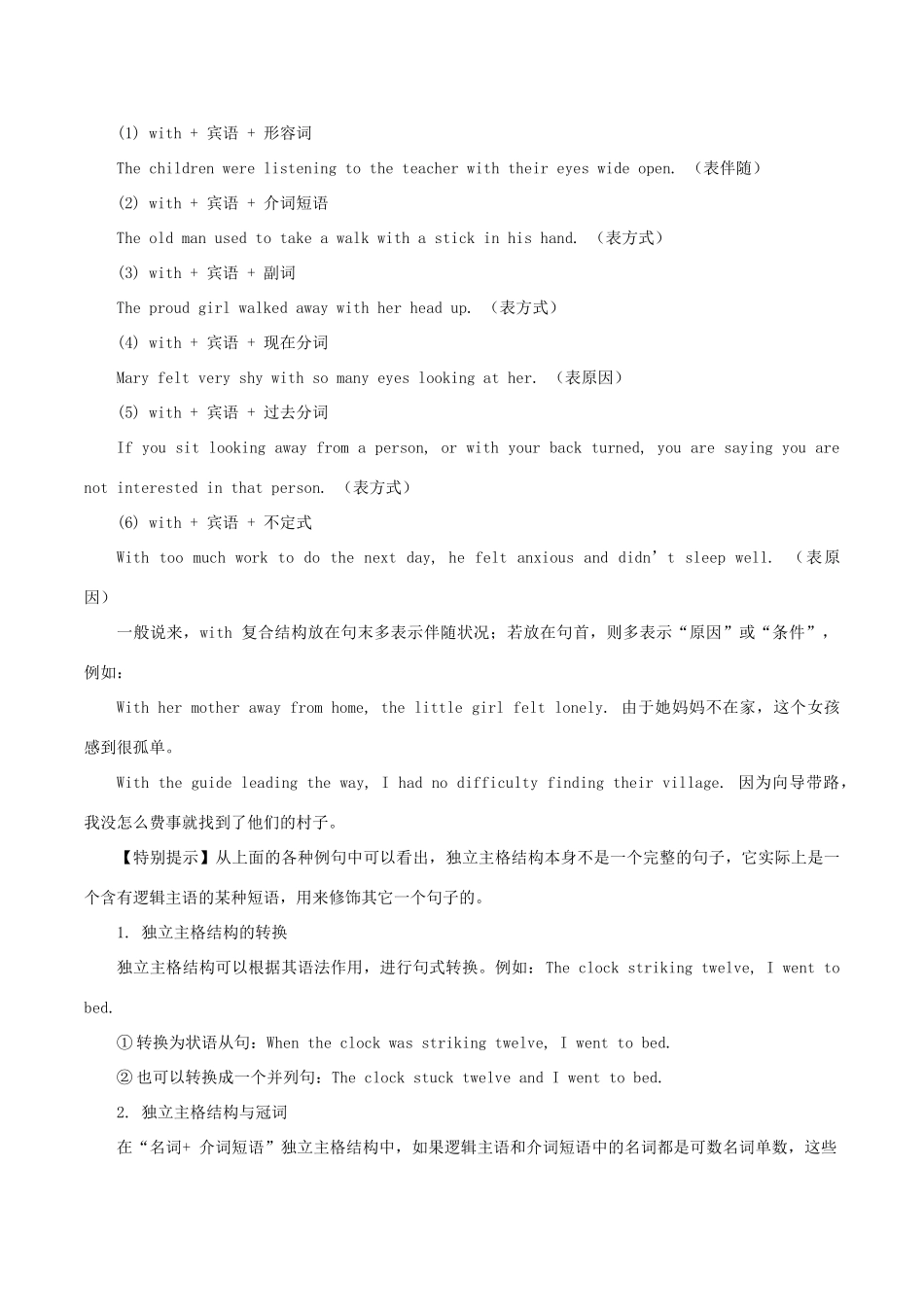英语独立主格结构简析独立主格结构,是由“名词或代词+现在分词、过去分词、不定式、形容词短语、名词短语、介词短语或副词短语”构成的一种独立结构。在该结构中,名词或代词与其后的部分构成逻辑上的主谓关系,用来修饰谓语动词或整个句子。在句中作状语,表示 “时间、条件、原因、伴随,方式或结果” 等含义。其位置比较灵活,放于句首句末均可。 1. 名词(代词)+ 现在分词 The clock striking twelve, I went to bed. (表原因) These women having produced works of the highest quality, any survey of the 19th century English literature must include them. (表原因) 2. 名词(代词)+ 过去分词 He lay there on his back, his teeth set, his right hand clenched on his breast. (表伴随) Enough time given, she will surely do the job better. (表条件) 3. 名词(代词)+ 不定式 Here are the first three volumes, the fourth one to come out next month. (表伴随) He proposed a picnic, he himself to pay for the railway tickets and John to provide the food. (表方式) 4. 名词(代词)+ 形容词短语 Her face pale with anger, she rose to go away. (表原因) I saw a deep pond, the water blue like the sky. (表结果) 5. 名词(代词)+ 介词短语 Then, last night, I followed him here and climbed in, sword in hand. (表方式) Child in arms, a few women stood there chatting. (表方式) 6. 名词(代词)+ 副词短语 Summer over, the students returned to school. (表原因) 7. 名词(代词)+ 名词短语 His first shot a failure, Tom fired again. (表原因) 8. with 复合结构 “with 复合结构”也是独立主格结构的一种,同样十分重要。在句中表示“原因,结果,伴随,方式”等情况。现把“with 复合结构”的各种情况作一总结。 (1) with + 宾语 + 形容词 The children were listening to the teacher with their eyes wide open. (表伴随) (2) with + 宾语 + 介词短语 The old man used to take a walk with a stick in his hand. (表方式)...


